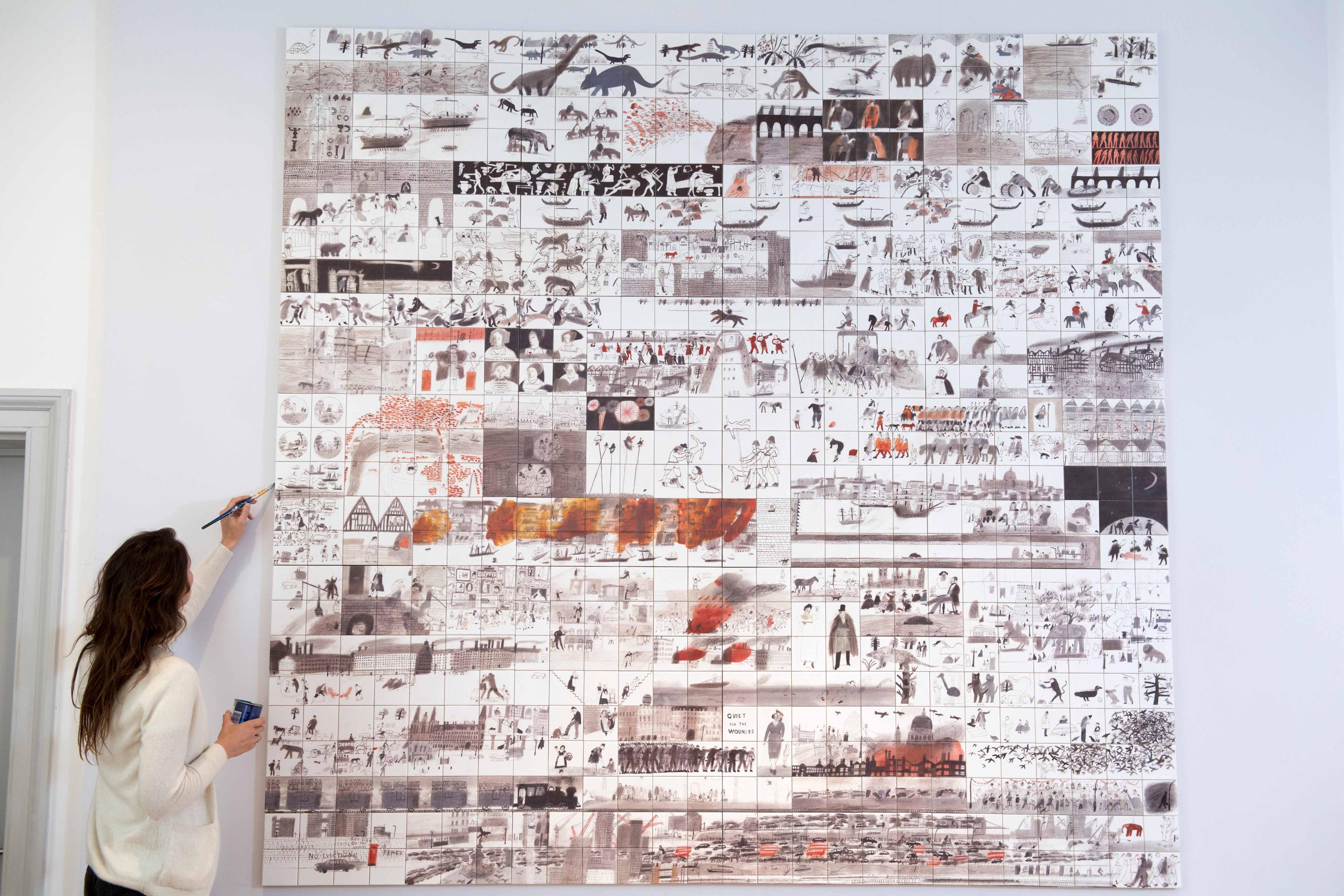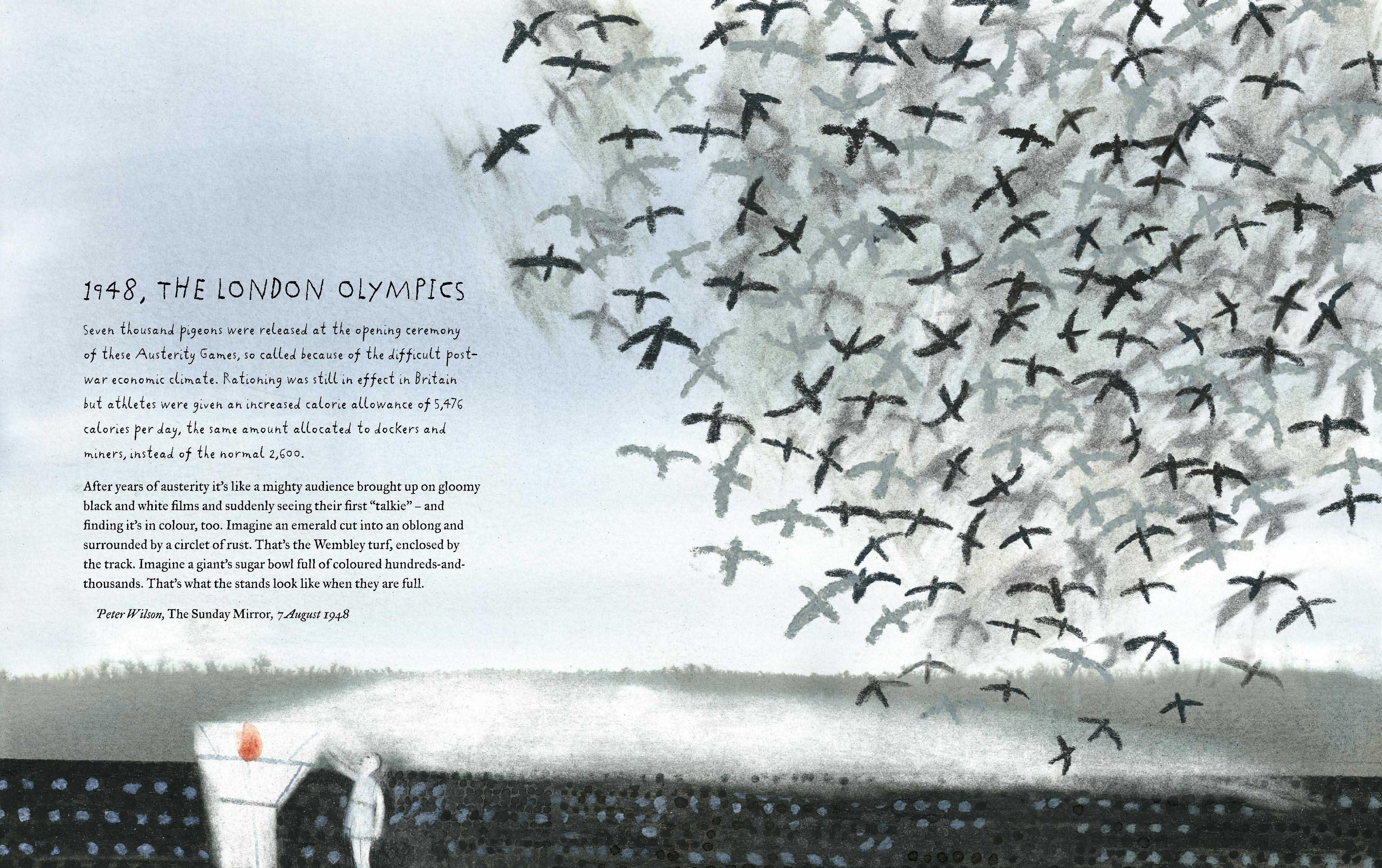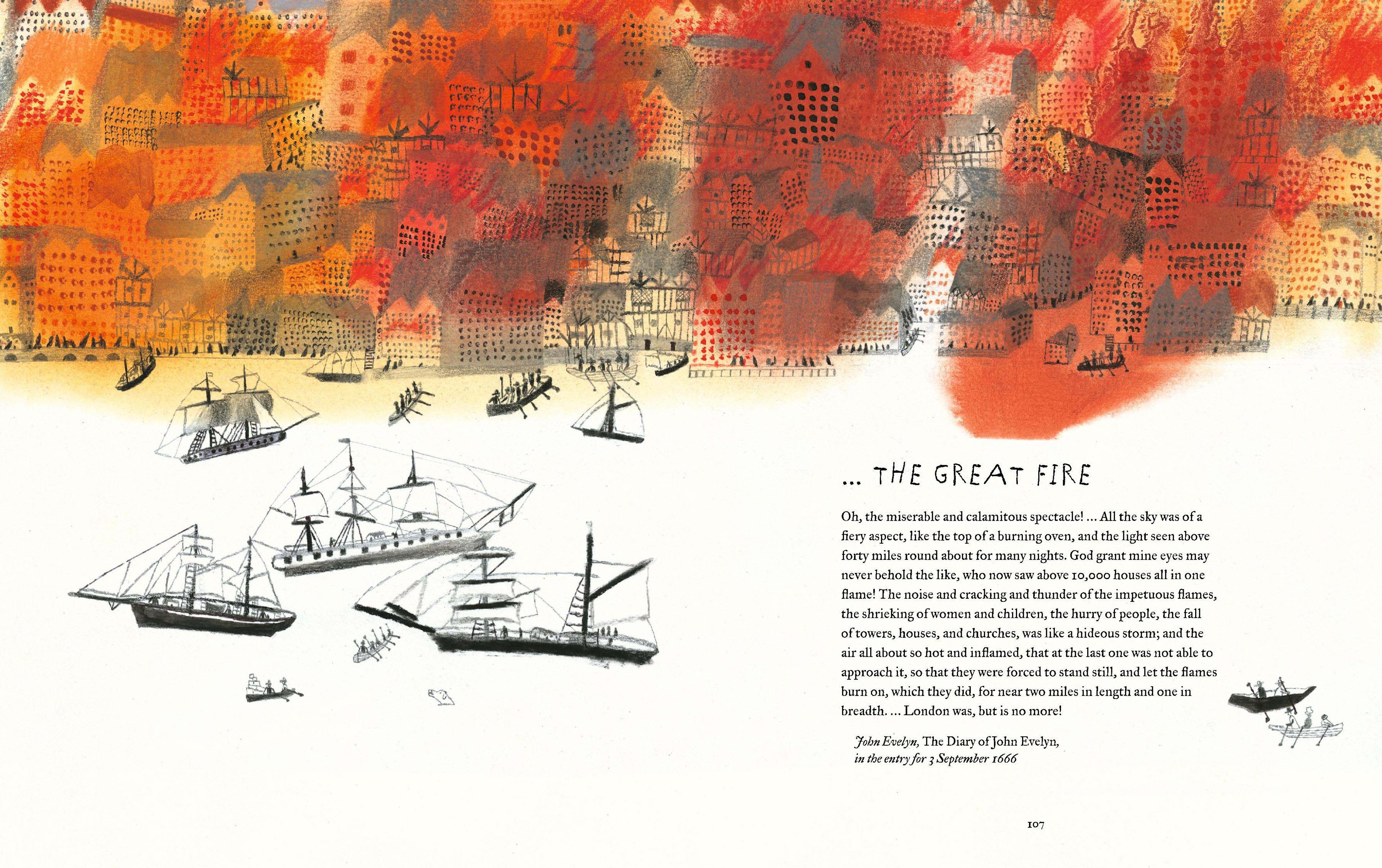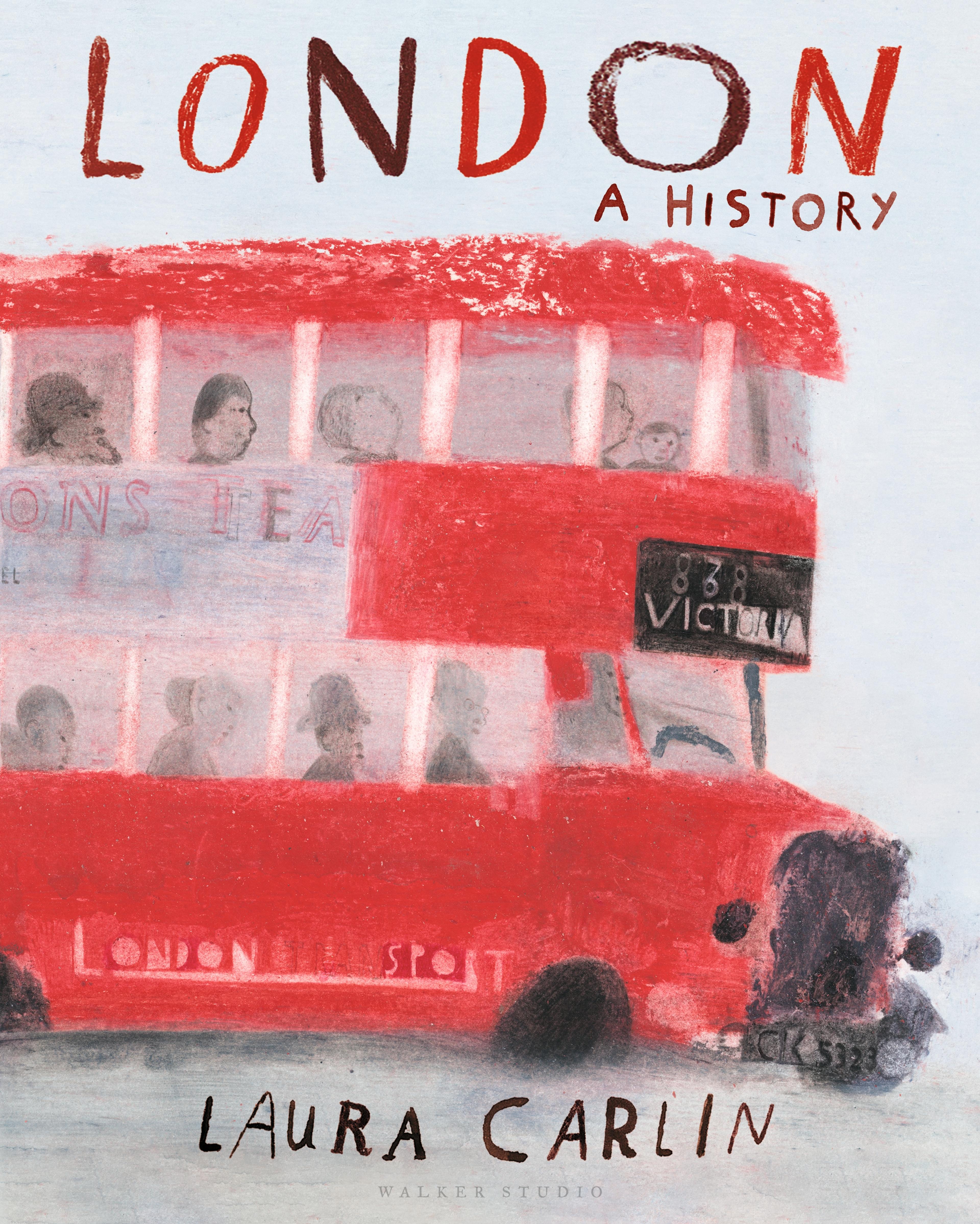A Q&A with illustrator Laura Carlin
by Laura Carlin, Illustrator
We spoke with Laura Carlin about her latest book, London: A History. During our conversation, we learned how her exhibition at our previous gallery space in King's Cross back in 2016 inspired this illustrated book, which has been four years in the making.

Where did the idea for London: A History come from?
It was actually for a show I had at the original site of the Quentin Blake Centre for Illustration—at King's Cross—in 2016. I wanted to do something about London because that’s where the exhibition would be. My work partner Jo and I produced a tile mural of almost 1,000 tiles that illustrated London's history from the beginning (when it was all underwater) to the present day (when we’re all looking at our phones). It was a bit of a homage to the Museum of London, then at its old site (it’s currently moving to a new space in Farringdon).
Walker Books, publishers with whom I work a lot, saw the mural and asked if I’d like to do a book.

How did you choose which stories to include in the book?
As with the telling of history, the book was always going to reflect my bias—specifically, which parts I found the most interesting. I’m less interested in the Kings and Queens and more in the smaller stories of everyday life.
The advice from the publishers was crucial, helping to keep me on track and reminding me to be as explanatory as possible for the reader.
At first, we thought we might be able to reproduce the drawings I used for the tile mural. However, when tiles are on a wall, your eyes can skim over details to take it all in. On the page, you can stop and absorb details or periods of time in a much more intentional way. So, every drawing was done especially for the book.

How much research did you do?
Lots, and not just by me! Denise, Meera, Ben, and Marina from Walker Books helped, as did my brother Tom. We explored countless books, visited many libraries and the Museum of London.
London: A History has relatively few words, but it required a huge amount of research to constantly zoom out and try to piece everything together.
What surprised you the most?
A lot about the history of London didn’t surprise me—the ever-increasing gap between rich and poor, the grime, and the sinister goings-on. But I loved discovering Henry III’s menagerie, the left-hand side rule originating on London Bridge, and the phrase ‘to spend a penny’ coming from the Great Exhibition of 1851.

Why do you think that illustration is a good way to tell these historical stories?
Illustration is wonderfully approachable; it invites you in. Whether you can read words or not, you can read and explore a picture. I try to create enough interest to make the reader look, but then leave enough room for their imagination. I don’t want my illustrations to be too static or to tell 100% of the story.

How did you create the illustrations for the book?
I used a combination of pastels—chalk and oil, ink, acrylic paint, watercolour, pencil, and wax resist.
I’m trying not to let myself get too comfortable when I sit down to draw and paint. Books take a long time, and they seem to take me even longer. The danger is that the work becomes stale and boring, so I try to keep myself on my toes.
I think you can tell if an illustrator, writer or artist has enjoyed creating their work.
What was your favourite story to illustrate?
Definitely Christmas before and after Cromwell.
What was the most challenging part?
Planning this book was not easy, as it doesn’t fit neatly into any category or target audience. However, it is a love letter to London, and I enjoyed creating the artwork so much.
What made you choose an illustration of a London bus for the cover?
We decided on a limited colour palette early in the project to ensure cohesion throughout the book. This palette primarily consists of blacks, greys, red and burnt orange. The London bus, with its iconic status and striking bright red color, was a natural choice for the cover.

What are you working on next?
I’m currently working on a book about sculpture for children. Even at 44, I sometimes feel intimidated by abstract artwork or sculptures in galleries, questioning whether I have the ‘right’ idea or if I’m interpreting them correctly. This book celebrates sculpture in all its forms, from stacks of pancakes to giant red balloons squeezing into cityscapes. My hope is that it inspires children to have fun and create their own versions.